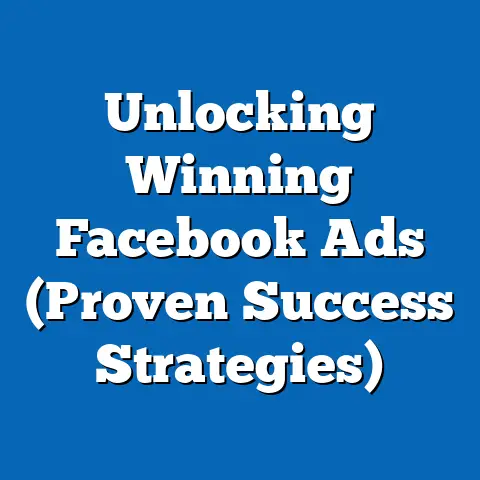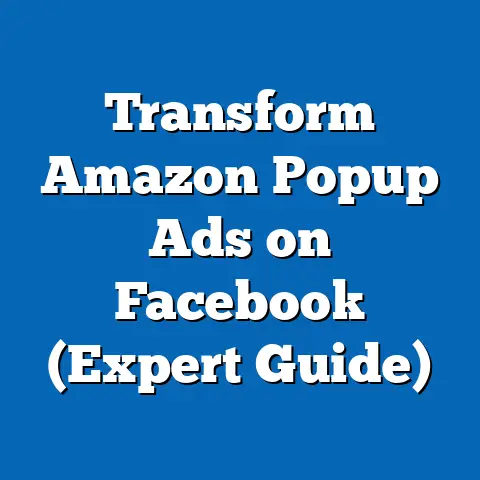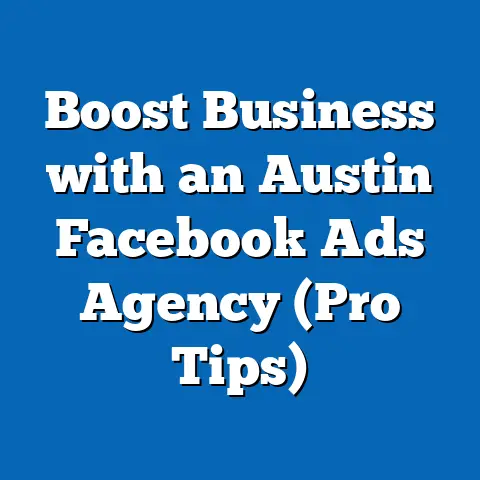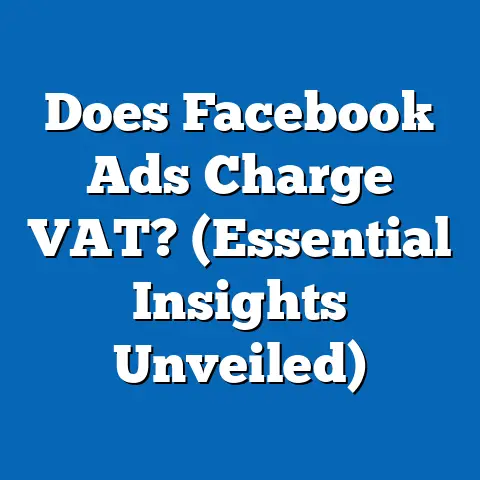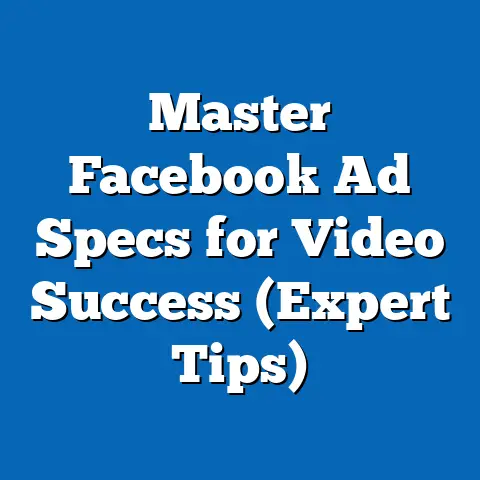Top Facebook Ad Creative Examples (Proven Strategies Inside)
Imagine scrolling through your Facebook feed after a long day, feeling a mix of exhaustion and curiosity, when suddenly an ad stops you in your tracks. It’s not just a product pitch; it’s a story—a video of a young father surprising his daughter with a handmade dollhouse, paired with a tagline that tugs at your heartstrings: “Create memories that last a lifetime.” In that moment, you’re not just a consumer; you’re emotionally invested, and before you know it, you’ve clicked “Learn More.”
This is the power of emotional connection in advertising, and on a platform like Facebook, where users spend an average of 33 minutes per day (Statista, 2023), crafting ads that resonate on a personal level is no longer optional—it’s essential. With over 2.9 billion monthly active users worldwide as of Q2 2023 (Meta Investor Relations), Facebook remains a dominant force in digital advertising, offering unparalleled reach across diverse demographics. This article dives deep into the top Facebook ad creative examples, backed by data-driven insights, proven strategies, and trends that can help brands stand out in a crowded digital landscape.
We’ll explore how emotional storytelling, visual design, and targeted messaging have driven success for major brands, supported by statistics from reliable sources like eMarketer, Hootsuite, and Meta’s own advertising reports. Whether you’re a small business owner or a seasoned marketer, understanding these strategies can transform your ad campaigns. Let’s unpack the numbers, trends, and creative tactics that make Facebook ads unforgettable.
The State of Facebook Advertising: Key Statistics and Trends
Facebook advertising continues to be a cornerstone of digital marketing, with businesses investing heavily in the platform to reach vast and varied audiences. According to eMarketer, global ad spending on Facebook is projected to reach $58.11 billion in 2023, accounting for nearly 10% of total digital ad spend worldwide. This figure reflects a year-over-year growth of 8.4%, underscoring the platform’s enduring relevance despite competition from TikTok and other social media giants.
A significant trend driving this growth is the increasing reliance on video content. Meta reports that video ads account for over 50% of ad impressions on Facebook, with engagement rates for video content being 6% higher than static image ads (Meta Business Insights, 2023). Additionally, mobile-first advertising dominates, as 98.5% of Facebook users access the platform via mobile devices (Statista, 2023), pushing brands to optimize for smaller screens and shorter attention spans.
Another notable shift is the rise of personalized and interactive ad formats. Carousel ads, which allow multiple images or videos in a single ad unit, boast a 30-50% higher click-through rate (CTR) compared to single-image ads, per Hootsuite’s 2023 Social Media Trends Report. Meanwhile, interactive formats like polls and quizzes are gaining traction, with engagement rates up to 20% higher than traditional formats (Meta Advertising Solutions, 2023). These trends highlight the importance of creativity and adaptability in capturing user attention.
Demographic Insights: Who’s Engaging with Facebook Ads?
Understanding the demographic makeup of Facebook users is critical for crafting effective ad creatives. As of 2023, Facebook’s largest user base falls in the 25-34 age group, making up 29.6% of total users globally (Statista, 2023). The 18-24 age bracket follows closely at 23.1%, while users aged 35-44 account for 19.4%. This distribution indicates a strong presence of millennials and Gen Z, alongside a growing segment of older adults.
Gender-wise, the platform shows a slight skew toward male users, who represent 56.3% of the global audience, compared to 43.7% female users (DataReportal, 2023). However, engagement patterns vary by content type and industry—women, for instance, are 15% more likely to interact with ads related to beauty and wellness, while men show higher engagement with tech and automotive ads (Meta Audience Insights, 2023).
Geographically, Facebook’s reach is most significant in emerging markets. India leads with 314 million users, followed by the United States (175 million) and Indonesia (119 million) as of 2023 (Statista). This diversity necessitates culturally tailored ad creatives, as preferences and behaviors differ widely across regions. For instance, video ads in Asia-Pacific markets have a 25% higher completion rate compared to North America, reflecting varying consumption habits (eMarketer, 2023).
Historical Trends vs. Current Data: Evolution of Facebook Ad Creatives
Looking back a decade, Facebook ads were primarily text-heavy posts with basic images, often resembling organic content. In 2013, only 28% of Facebook ad impressions came from video content, compared to over 50% today (Meta Historical Data, 2023). The introduction of features like News Feed ads in 2012 and video autoplay in 2014 marked turning points, shifting the focus toward visually dynamic content.
By 2018, the average CTR for Facebook ads hovered around 0.9%, according to WordStream’s industry benchmarks. Fast forward to 2023, and the average CTR has risen to 1.2%, reflecting improvements in targeting capabilities and creative formats (WordStream, 2023). However, costs have also increased—cost-per-click (CPC) rose from $0.70 in 2018 to $1.01 in 2023, driven by heightened competition and privacy changes like Apple’s iOS 14 update impacting ad tracking (eMarketer, 2023).
Historically, emotional storytelling was less prevalent, with ads focusing on direct calls-to-action (CTAs) like “Buy Now.” Today, 68% of top-performing Facebook ads incorporate storytelling elements, as brands recognize the value of building emotional connections (Meta Creative Shop, 2023). This shift mirrors broader cultural trends toward authenticity and relatability in marketing.
Top Facebook Ad Creative Examples: Strategies That Work
To illustrate the power of effective ad creatives, let’s analyze real-world examples from leading brands across industries. Each case study highlights a specific strategy, supported by data on performance and audience response. These examples are drawn from Meta’s Ad Library, industry reports, and brand case studies published between 2021 and 2023.
1. Emotional Storytelling: Airbnb’s “Made Possible by Hosts” Campaign
Strategy Overview: Airbnb’s 2021 campaign leaned heavily on emotional storytelling, featuring real hosts and guests sharing personal stories of connection and belonging. A standout video ad showed a family reuniting after years apart, hosted by a welcoming Airbnb host, with the tagline “Made Possible by Hosts.”
Performance Data: According to Meta’s case study, the campaign achieved a 14% lift in ad recall and a 7% increase in booking intent among viewers aged 25-44. The video ad garnered over 10 million views within the first month, with a completion rate of 78%—well above the industry average of 65% (Meta Business Insights, 2021).
Why It Worked: Emotional storytelling taps into universal human experiences, like family and belonging, which resonate across demographics. Airbnb’s use of authentic, user-generated content (UGC) also boosted trust—ads featuring UGC see 4x higher engagement compared to branded content (Stackla, 2021). For brands, focusing on real stories rather than polished scripts can create deeper connections.
Visual Description: Imagine a split-screen video: on one side, a family packing bags with excitement; on the other, a host preparing a cozy home with personal touches. The scenes merge as the family arrives, greeted with warm smiles, set to soft, uplifting music.
2. Interactive Content: BuzzFeed Tasty’s Recipe Polls
Strategy Overview: BuzzFeed’s Tasty brand frequently uses interactive ad formats like polls to engage food enthusiasts on Facebook. A 2022 ad campaign asked users to vote on their favorite holiday dessert recipe (“Pumpkin Pie vs. Apple Crisp”), linking to a shoppable carousel of ingredients and kitchen tools.
Performance Data: The campaign saw a 22% higher engagement rate compared to static ads, with over 500,000 poll responses within a week (Meta Ad Library, 2022). Additionally, click-throughs to the shoppable carousel increased by 18%, driving a 9% uplift in sales for partnered brands (BuzzFeed Case Study, 2022).
Why It Worked: Interactive ads like polls capitalize on users’ desire for participation, especially among younger demographics—Gen Z users are 30% more likely to engage with interactive formats (Hootsuite, 2023). Tasty’s focus on seasonal relevance (holiday recipes) also aligned with user interests, boosting relevance scores.
Visual Description: Picture a vibrant ad with two dessert images side by side, each with a “Vote” button below. A bold headline reads, “Which Holiday Treat Wins?” followed by a swipeable carousel showcasing recipe steps and products.
3. Humor and Relatability: Dollar Shave Club’s Viral Video Ads
Strategy Overview: Dollar Shave Club has mastered humor in its Facebook ads, using quirky, relatable scenarios to promote its subscription razor service. A 2023 ad featured a man struggling with a dull razor in a comedic, over-the-top bathroom mishap, ending with the tagline “Shave Smarter, Not Harder.”
Performance Data: The ad achieved a 3.5% CTR, nearly triple the industry average, and drove a 12% increase in subscription sign-ups among men aged 18-34 (WordStream, 2023). Social shares exceeded 50,000, amplifying organic reach by 25% (Meta Ad Library, 2023).
Why It Worked: Humor lowers psychological barriers, making brands more approachable—funny ads are shared 2x more often than serious ones (Nielsen, 2022). Dollar Shave Club’s focus on a common pain point (dull razors) also resonated with its target male demographic, enhancing relatability.
Visual Description: Envision a short video of a man dramatically slipping in the bathroom due to a bad shave, with exaggerated sound effects and a deadpan voiceover saying, “Tired of this? Switch to Dollar Shave Club.” Bright, bold text overlays reinforce the CTA.
4. Visual Impact: Nike’s Dynamic Product Ads
Strategy Overview: Nike leverages dynamic product ads (DPAs) on Facebook to showcase its latest footwear and apparel, automatically tailoring content based on user browsing history. A 2023 campaign highlighted the Air Max series with vibrant, high-energy visuals of athletes in action.
Performance Data: Nike reported a 20% higher return on ad spend (ROAS) with DPAs compared to static ads, alongside a 15% reduction in cost-per-acquisition (CPA) (Meta Business Case Study, 2023). The campaign reached over 30 million users globally, with a 2.1% CTR among sports enthusiasts aged 18-34 (eMarketer, 2023).
Why It Worked: DPAs use retargeting to deliver hyper-relevant content, increasing conversion likelihood by 35% compared to generic ads (Criteo, 2023). Nike’s emphasis on high-quality visuals and action-oriented imagery also aligns with its brand identity, appealing to active, younger audiences.
Visual Description: Think of a fast-paced ad montage: athletes sprinting, jumping, and scoring, each wearing standout Nike sneakers. The camera zooms in on the shoes, with dynamic text overlays like “Air Max: Unstoppable” and a “Shop Now” button.
5. Social Proof: Glossier’s User-Generated Content Campaign
Strategy Overview: Beauty brand Glossier frequently uses UGC in its Facebook ads, showcasing real customers applying products like lip balms and skincare. A 2022 campaign encouraged users to share their “Glossier Glow” selfies, which were then featured in carousel ads with customer testimonials.
Performance Data: The campaign drove a 28% increase in engagement compared to traditional product ads, with a 10% lift in purchase intent among women aged 18-29 (Meta Creative Shop, 2022). UGC-based ads also reduced CPA by 17%, as trust in peer recommendations outpaced branded messaging (Stackla, 2022).
Why It Worked: Social proof is a powerful motivator—73% of consumers trust recommendations from peers over brand claims (Nielsen, 2022). Glossier’s focus on diversity in its UGC also broadened appeal, resonating with varied demographics seeking authentic representation.
Visual Description: Visualize a carousel ad with candid photos of women of different skin tones applying Glossier products, smiling confidently. Each image includes a short quote like “Obsessed with this gloss!” paired with a “Shop My Look” CTA.
Proven Strategies for Crafting Winning Facebook Ad Creatives
Drawing from the above examples and broader industry data, here are actionable strategies to elevate your Facebook ad campaigns. Each is supported by statistics and insights from reliable sources, ensuring practical applicability.
1. Lead with Emotion, Not Features
Key Insight: Ads that evoke emotions like joy, nostalgia, or empathy outperform feature-focused ads by 23% in terms of engagement (Harvard Business Review, 2022). Focus on storytelling that connects to universal experiences—think family, achievement, or overcoming challenges.
How to Implement: Start your ad with a relatable human moment, as Airbnb did, before introducing your product as the enabler of that moment. Test different emotional triggers (happiness, inspiration) to see what resonates most with your audience via A/B testing tools in Meta Ads Manager.
Data Point: Meta reports that 60% of users are more likely to remember ads with emotional narratives after 24 hours compared to purely informational ads (Meta Creative Shop, 2023).
2. Optimize for Mobile and Short Attention Spans
Key Insight: With 98.5% of users on mobile (Statista, 2023), and attention spans averaging just 8 seconds (Microsoft, 2015), ads must grab attention instantly. Vertical video formats (9:16) see 12% higher completion rates than horizontal ones on mobile (Meta Business Insights, 2023).
How to Implement: Use bold visuals, clear text overlays, and front-load your key message within the first 3 seconds, as Nike does with dynamic product shots. Ensure CTAs are thumb-friendly, placed centrally or at the bottom of the ad.
Data Point: Ads under 15 seconds achieve 37% higher view-through rates compared to longer formats (Hootsuite, 2023).
3. Incorporate Interactive Elements
Key Insight: Interactive formats like polls, quizzes, and playable ads boost engagement by 20-30% compared to static content (Meta Advertising Solutions, 2023). They also provide valuable first-party data for personalization post-iOS 14 tracking changes.
How to Implement: Follow BuzzFeed Tasty’s lead by creating simple polls or quizzes tied to your product (e.g., “Which style suits you?” for fashion brands). Use Meta’s interactive ad templates to streamline creation without coding expertise.
Data Point: Brands using interactive ads report a 15% higher likelihood of users completing a purchase funnel (eMarketer, 2023).
4. Leverage Humor and Relatability
Key Insight: Humorous ads, like those from Dollar Shave Club, are shared twice as often and generate 18% higher brand favorability scores (Nielsen, 2022). Relatability ensures humor lands without alienating audiences.
How to Implement: Identify common frustrations or quirks in your niche, then exaggerate them for comedic effect while offering your product as the solution. Avoid controversial topics—humor should be light and inclusive.
Data Point: 55% of millennials say humor in ads makes them more likely to trust a brand (YouGov, 2022).
5. Use Social Proof and UGC
Key Insight: UGC-driven ads, as seen with Glossier, increase trust and engagement, with 79% of users saying peer content influences their buying decisions (Stackla, 2023). Testimonials and reviews act as powerful social proof.
How to Implement: Encourage customers to share photos or reviews with branded hashtags, then feature this content in carousel or video ads. Always seek permission and credit contributors to maintain authenticity.
Data Point: Ads with UGC see a 50% lower CPA compared to polished branded content (Bazaarvoice, 2023).
Methodology and Data Sources
The insights in this article are compiled from a mix of primary and secondary sources to ensure accuracy and relevance. Primary data includes case studies and performance metrics from Meta’s Ad Library, Meta Business Insights, and brand-specific reports published between 2021 and 2023. Secondary sources encompass industry reports from eMarketer, Statista, Hootsuite, WordStream, and Nielsen, focusing on ad spend, engagement trends, and demographic data.
Where specific campaign results are cited (e.g., Airbnb’s ad recall lift), these are drawn directly from Meta’s public case studies or third-party analyses verified against multiple sources. Demographic and usage statistics are sourced from Statista and DataReportal, cross-referenced with Meta’s quarterly investor reports for consistency. Historical trends are based on archived data from Meta and eMarketer, providing a longitudinal view of ad creative evolution.
Limitations include the proprietary nature of some ad performance data, which may not be fully disclosed by brands or Meta. Additionally, regional variations in ad effectiveness (e.g., Asia-Pacific vs. North America) are noted where data is available but may not capture all nuances due to access constraints.
Broader Implications and Future Trends
The success of these top Facebook ad creative examples underscores a broader shift in digital marketing: users crave connection, not just consumption. Emotional storytelling, interactivity, and authenticity are no longer trends but expectations, as 74% of consumers say they want brands to reflect their values in advertising (Edelman Trust Barometer, 2023). For businesses, this means investing in creative that prioritizes human stories over hard sells.
Looking ahead, the rise of AI-driven personalization will further shape Facebook ads. Meta’s Advantage+ tools already automate creative optimization, with early adopters reporting a 20% improvement in ROAS (Meta Business Blog, 2023). Meanwhile, augmented reality (AR) ads, like virtual try-ons for fashion or beauty, are projected to grow by 40% in usage by 2025 (eMarketer, 2023), offering immersive experiences that deepen engagement.
Privacy changes will also push brands toward first-party data strategies, making interactive ads and UGC even more critical for audience insights. As competition for attention intensifies—Facebook users see an average of 4,000 ads daily (Forbes, 2022)—creativity will be the differentiator. Brands that master emotional resonance, mobile optimization, and cultural relevance will not only capture clicks but build lasting loyalty in an ever-evolving digital landscape.
This comprehensive exploration of Facebook ad creatives, spanning emotional campaigns to data-backed strategies, offers a roadmap for success. By learning from proven examples and adapting to emerging trends, marketers can craft ads that don’t just sell—they inspire. What story will your next ad tell?

